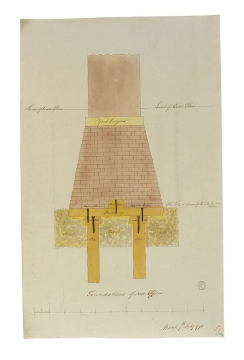
Browse
Reference number
Purpose
Aspect
Scale
Inscribed
Signed and dated
- Bank 7th Feby 1798
Hand
Notes
The foundations of the bank rested on earlier debris and Roman artefacts were frequently found during excavations. Excavations for the first bank builldings in March 1732 revealed a large Roman wall with a portrait statue discovered beneath one of its arches. The artefacts, reported the Society of Antiquaries, were 'carefully covered up again.' John Soane's excavations revealed three mosaic floors. See SM 59/1/32 for a coloured etching of the Roman mosaic discovered under the South West angle, drawn by Thomas Fisher, 1806.
Literature: H. Rooksby Steele and F.R. Yerbury, The Old Bank of England, London, 1930, p. 8; J.A. Giuseppi, 'Roman Relics', Lady Day, 1936, p. 282.
Level
Sir John Soane's collection includes some 30,000 architectural, design and topographical drawings which is a very important resource for scholars worldwide. His was the first architect’s collection to attempt to preserve the best in design for the architectural profession in the future, and it did so by assembling as exemplars surviving drawings by great Renaissance masters and by the leading architects in Britain in the 17th and 18th centuries and his near contemporaries such as Sir William Chambers, Robert Adam and George Dance the Younger. These drawings sit side by side with 9,000 drawings in Soane’s own hand or those of the pupils in his office, covering his early work as a student, his time in Italy and the drawings produced in the course of his architectural practice from 1780 until the 1830s.
Browse (via the vertical menu to the left) and search results for Drawings include a mixture of Concise catalogue records – drawn from an outline list of the collection – and fuller records where drawings have been catalogued in more detail (an ongoing process).

